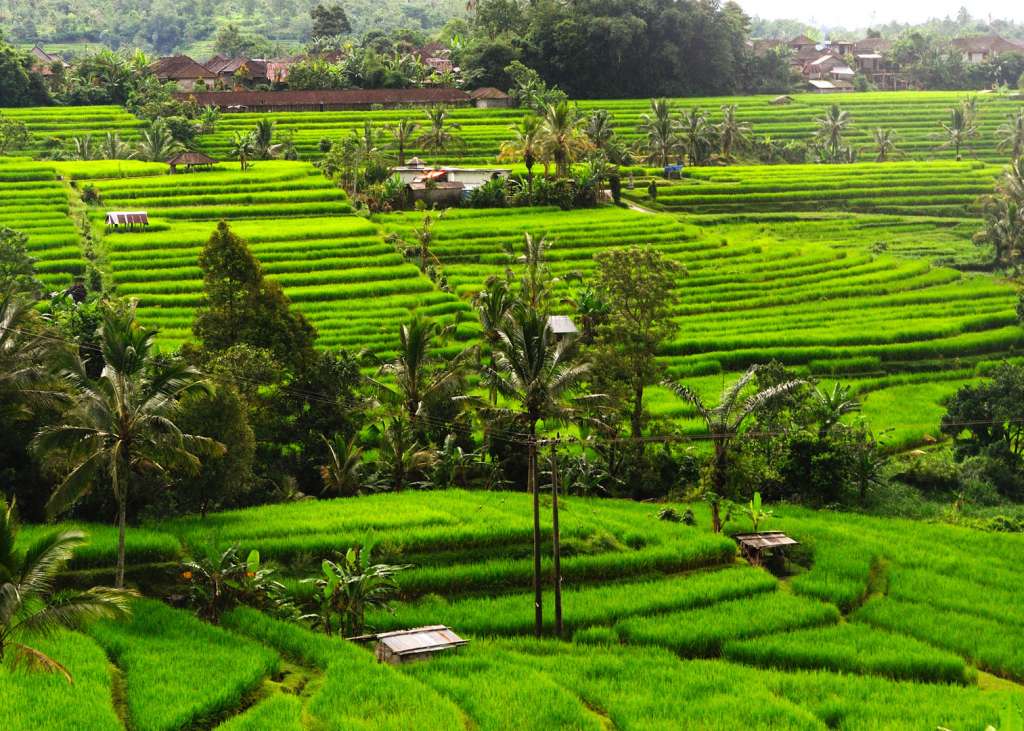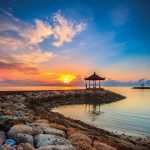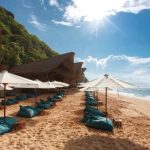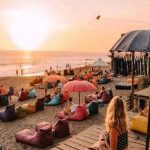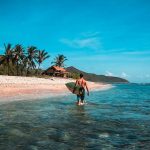Bali Tours : Tabanan
Tabanan is the capital town of the regency of Bali with the same name. Parts of Tabanan regency lie in Central Bali and other parts would be more often regarded as part of West Bali. For the purposes of this guide the Tabanan area will be classified in Central Bali, as that is where the key areas of interest to visitors are located.
The coastal areas in the south were previously not well known by visitors due to a lack of infrastructure, but these have been lightly developed in recent years, and there are now some high profile accommodation options there. Tabanan is though more usually associated by visitors with rolling green landscapes, hills and especially the imposing Mount Batukaru, Bali’s second highest peak at 2,276 metres.
The town of Mengwi has a long and rich history associated with its royal family, and the best modern day manifestation of this is the splendid temple complex at Taman Ayun
There are numerous smallroads and unmade tracks that lead from the coast road south of Tabanan to the waterfront. The beaches here are all black sand. The most well known of them, and one with some good accomodation options, is Yeh Gangga. This is well signposted from the main coast about 2.5km past Tabanan, heading west. Be warned though that much of this west coast shoreline is unsafe for swimming.
Bali Butterfly Park (Taman Kupu Kupu Bali), Jalan Batukaru, Banjar Sandan lebah, Wanasari vilage, Tabanan (5 km north of Tabanan town centre on the road to Mount Batukaru), ☎ +62 361 814282, [1]. 8AM-4PM daily. A small but well maintained centre for research and education into butterflies with some very spectacular species on show. Who doesn’t like butterflies? Best to visit in the early and mid morning when the butterflies are at their most active. Rp 60,000.
Pura Luhur Batukaru (Batukaru Temple), near Wongayagede village. One of Bali’s key directional temples and a site of pilgrimage for Hindu Balinese. Majestically situated on the slopes of Mount Batukaru since the 11th century, this is an especially sacred site, even by Balinese standards and all visitors must carefully read and abide by the temple rules posted clearly at the entrance. The temple is high on the slopes of the mountain and the often misty, drizzly micro-climate here just adds to its undoubtedly mystical atmosphere.
Taman Ayun at Mengwi
Pura Taman Ayun (Mengwi Water Temple), (2 km west of Mengwi on the road to Abiansemal). daily 8AM-6PM. This very pleasing temple was built in 1634 by the King of Mengwi as his family temple. The terraced courtyards of the temple are set in very well maintained grounds, surrounded by man-made waterways and entered over a bridge. Mengwi is about 8km east from the town of Tabanan. Rp 6,000.
Sangeh Monkey Forest (Bukit Sari), Sangeh (Sangeh village is on the small road that leads from Abiansemal to Petang, just to the north east of Pura Taman Ayun). The macaques here act as guardians of Puri Buki Sari (Bukit Sari Temple). Legend has it that these monkeys are descendents of the army assembled by the monkey king Hanuman and that the forest here is a fragment of Mount Meru that fell to earth. The temple was built in the 17th century. The monkeys here are as bold as elsewhere in Bali so hang on to your belongings. Sangeh combines well with a vist to Pura Taman Ayun. Tourist can buy Durian for cheaper price (around Rp 5,000-10,000) each. Domestic and International tourist may have a different rates. Rp 6,000.
Subak Museum (Mandila Mathika Subak), Jl Raya Kediri, Sanggulan village (2 km east of Tabanan town centre), ☎ +62 361 810315. 7AM-4PM daily. This museum is dedicated to the famed subak system of unmechanised irrigation which has been in use in Bali since AD 600. Domestic and International Tourist may have a different rates Rp 5,000.
Alas Kedaton.
Tanah Lot Temple.
Jati Luwih Rice Terrace.
Taman Pujaan Bangsa Margarana (Margarana Memorial Park).
